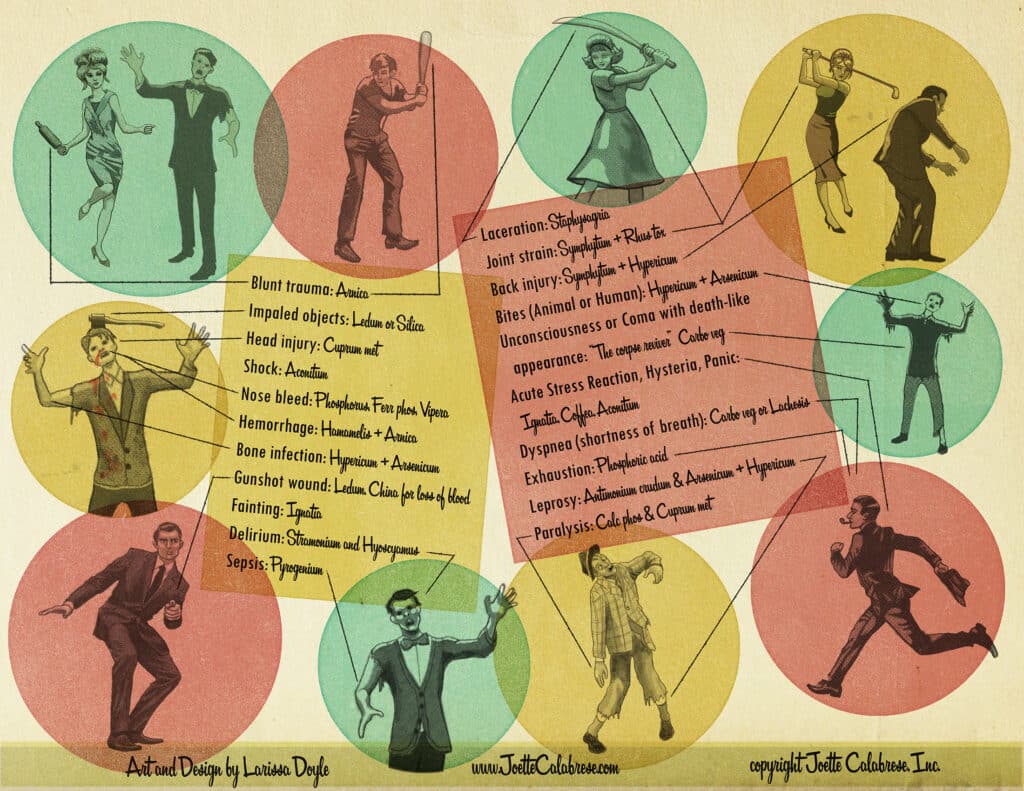Homeopathy and Epidemics
Check out more of my Survival Medicine Blogs
Share this course
Table of Contents

Homeopathy is a medical paradigm that used to nestle comfortably alongside all the other branches of medicine. In the 1800s, more than 100 homeopathic hospitals and 22 homeopathic medical schools had been opened in the United States. In fact, many of today’s hospitals were founded as homeopathic hospitals.
Homeopathy developed an outstanding record of success. During the deadly Spanish flu epidemic in 1918, for example, the conventional doctors lost 28% of their flu patients to death, while the homeopathic doctors lost only 2%.
Then in the 1930s, antibiotics were introduced and hailed as miracle drugs. The conventional doctors and the fledgling pharmaceutical industry joined forces to drive the homeopathic doctors, their main competitors, out of business. Their smear campaign succeeded in North America, but homeopathy continued to thrive in Europe, India and South America, where today it is the fastest growing method of medicine. According to the Associated Chambers of Commerce and Industry of India, the Indian market is likely to grow 30% per year. This same organization estimates global growth at 25% annually, with France being the largest contributor.
Despite the skeptics that still ridicule homeopathy, its record of excellence in fighting epidemics is documented. In a crisis situation, where doctors and hospitals may be unavailable, homeopathy can bring healing to thousands through the sweeping action of a single well-chosen remedy. In fact, public health is the arena where homeopathy’s reputation was established in the nineteenth century.
Contagions and Nosodes
Homeopathy works on the principle that “like cures like.” This principle says that any substance that can cause illness in a healthy person can cure that illness if manipulated in such a way as to antidote the toxic properties and leave only the curative ability. We accomplish this through a series of dilutions.
This method is a particular boon in the case of epidemics. An epidemic illness is caused by a contagious microorganism. Once the microorganism is identified, a remedy can be created that specifically targets that organism. In other words, your poison becomes your medicine. This specific remedy is called a nosode.
The nosode offers healing for those with the illness and protection even before any symptoms appear.For example, Influenzinum is a remedy specific for flu. As a prophylactic, it would be taken four times in one day, then once per week for a month, and finally once every month until the contagion dies out. That can be as long as two to three months total. This remedy can also be employed after someone has already contracted the flu to mitigate the symptoms. In this case, when the illness begins to manifest, the remedy is taken twice daily until health is restored.
Infographic

Download the Survivalist Infographic today!
The Genus Epidemicus: When We All React Similarly to Certain Illnesses
Another key to the treatment of epidemics is that once the precise symptoms that consistently present in a population affected by a particular illness are identified, the homeopath can recognize a symptom pattern within this entire group. Although homeopathic remedies are usually selected based on individual traits and symptoms, in the case of epidemics, one remedy often works for all.
For example, in some forms of influenza, the main symptom might be profound fatigue with a dusky appearance as the chief observations. These symptoms would call for the remedy Gelsemium. Another form of flu might present with coldness up the back and relentless nausea, which would call for Nux vomica. Once the symptoms are clear, the appropriate remedy can be used to treat an entire population. So, the infected community would use the selected remedy every day for a week to minimize the chance of contracting the flu and then once per week for a month until the threat was over.
A single remedy that treats large numbers of people in an epidemic is called the genus epidemicus. Homeopathic methodology states that the individual becomes a part of a whole community. The response within that particular population is represented in the “herd,” so that one remedy will suit many, if not all. The results can be astonishing.
During one of the cholera epidemics of the 1800s, the genus epidemicus was Camphor. During the Spanish flu of 1919, it was Gelsemium. In these situations, the remedy would be administered in a 30th potency every few hours for many days.
If after a few doses of the genus epidemicus remedy, a person does not respond and the symptoms do not begin to abate, then the symptoms and traits of the individual person can be examined to determine a person-specific remedy that will work for that person.
Get started today!
The Survivalist Guide to Homeopathy
For Those Who Seek Health Independence
And True Medical Preparedness
An Example of Homeopathy’s Efficacy
An interesting case of homeopathy use in epidemics is found in Cuba and its plaguing swamp fever or leptospirosis. The spirochete, Leptospira, is transferred from rats to people during the flood season that inundates Cuba virtually every year. Because of the aftermaths of hurricanes and subsequent water contamination, this epidemic runs rampant throughout the island. Symptoms include fever, diarrhea, jaundice, vomiting, meningitis, liver failure, kidney damage, respiratory illness and death. In a country of little interest to the pharmaceutical industry, Cuban doctors have learned to fend for themselves by incorporating homeopathy into their healthcare system.
In 2008, the Finlay Institute, a Cuban research foundation, conducted a full research program on leptospirosis. Cuban doctors and researchers developed a homeopathic remedy derived from the bacterium that causes leptospirosis. The remedy was administered as a prophylactic in two doses, seven to nine days apart to 2.4 million people who were considered the most susceptible to the disease. The widescale treatment was administered by a team of Cuban doctors underwritten by the Cuban Ministry of Public Health.
The expected rate of infection—even when allopathic vaccination and antibiotics were used—was a few thousand cases of the disease, including some deaths. After the use of the homeopathic nosode, only ten cases of leptospirosis were reported that year among the 2.4 million people who had been treated with the nosode!
Remarkably, or rather, not so remarkably given homeopathy’s history of effectiveness in epidemics in the last two hundred years, the method also produced no mortality of hospitalized patients. Leptospirosis had plagued the small country for several years. Yet in the aftermath of the usual flooding in 2008 there was very nearly no disease among those receiving the homeopathic prophylactic! And the cost to the Cuban government? $200,000. The usual cost for allopathic treatment of the disease, which relies solely on drugs and vaccinations, had been more than two million dollars. Allopathic intervention was proved not only pricey and comparatively less effective but was also littered with side effects.
In an epidemic crisis, homeopathy produces healthy results and is safe and cost effective. And that is just the beginning of what this elegant medicine can do. Don’t you owe it to yourself, your family and your community to learn more?
The Survialist Guide to Homeopathy
A Hard cover Bound Guide that will be used for generations to come, with 8+ hours of webinars to flesh out the content of the Guide… and much more.
Training…Tools…Support
And a simple, interest-free payment plan.
You have done your homework, now it is time to make the right decision.
Get started today!
The Survivalist Guide to Homeopathy
For Those Who Seek Health Independence
And True Medical Preparedness

My offer to you is risk-free.
Simply email us within the first 30 days of purchase that you wish to return your Guide. We will cancel your privileges and once we receive the returned Guide we will refund your full investment.
Do not put off purchasing to tomorrow. Things to be done tomorrow are frequently not done at all.
Now, while this letter is before you, simply click this link. This way your position is assured, and your access to the priceless information guaranteed.
Remember the last course I offered? Those students have reported it was a “life changer” and are already enjoying the benefits of what they learned.
If you believe in Homeopathy, dislike allopathic options, or simply feel an intuitive pull towards a different way…
This is the time.
This is the moment.
You will not find this material anywhere else.
(Unless you can get a fellowship and travel to India!)
Please join me. I’d love to meet you.
Warmly,

